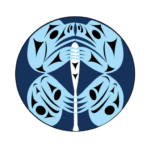2002 - Vancouver Island Aboriginal Transition Team (VIATT)
One of five regional planning groups created in response to provincial government recognition that Aboriginal communities should exercise control over services to their children, families, and communities; supported by government
2007 - Vancouver Island Aboriginal Transition Authority (VIATA)
VIATA was created under the Community Services Interim Authorities Act to move towards management of services planned by VIATT
VIATA was deemed ready to move forward to official designation in 2008, but objections from some First Nations leaders elsewhere in the province led to government withdrawing legislation authorizing the Authority, and VIATA came to an end
2009 – Solidarity Moving Forward
After government retracted approval for VIATA, the Chiefs from Vancouver Island gathered at Tseycum First Nation to declare their continued support for assuming jurisdiction
A second meeting of Chiefs from the South Island led to the signing of the ‘South Island Statement of Solidarity for Children and Families’ which restated inherent jurisdiction and the commitment to move forward with assuming control of services, which the Province was invited to witness
The idea of creating a system for all Aboriginal people living on the traditional territories in the South Island continued in the vision of the Chiefs for the new service system
2009 – South Island Wellness Society (SIWS)
In the wake of the collapsed Authority process, government initiated a new planning process
SIWS was a planning organization created to move toward a new service delivery model governed by the Indigenous peoples of the South Island
The nine Chiefs and an Urban leader were the Board, and SIWS adopted some of the staff and much of the community work of VIATT and VIATA
2011 – Signing of the ‘Child and Family Wellness Accord’
The leadership of the nine Nations, Urban Aboriginal leadership, and the province signed this accord, which references and builds on the Statement of Solidarity and resolves: …to work on a government-to-government basis and in the spirit of recognition and reconciliation to achieve the vision of an integrated and wholistic children and families services system based upon the strengths, customs and traditional practice for the care and well-being of the children of the communities of the South Island.
2013 – Representative for Children and Youth Tables Report Titled “When Talk Trumped Service: A Decade of Lost Opportunity for Aboriginal Children and Youth in B.C.”
The report recommended, and government accepted, the de-funding of planning contracts such as SIWS
2014 – SIWS Changes Focus
SIWS quickly had to change its focus to become a service delivery organization, providing culturally based child and family services in the South Island
Formal planning to assume jurisdiction, supported by government, ended in the community
However, the dream continued and key players from earlier initiatives collaborated with local management at MCFD to find ways to create better services, better relationships and more community connections between the ministry and the communities
2017 - Signing of Protocol Agreement
In February 2017 the management of South Island MCFD and the Board of SIWS signed a Protocol Agreement recognizing the cultural role of SIWS in working with families, communities, Nations and MCFD
SIWS also was recognized as a conduit or mediator in communications between MCFD and families or communities, or when conflict arose between the local MCFD services and the Nations
2018 – Funding Made Available & SIIA Created
In 2018 government, through MCFD, made funding available once more to support Indigenous communities taking control of their child, family, and community services
To create a clear delineation between SIWS as a service delivery organization and this new planning process, a new society approved by nine South Island Chiefs was created (South Island Indigenous Authority Society) with a separate board and separate administrative structures
SIIA applied for society registration in January of 2019
2019 – Tripartite Process
In early 2019 the Federal Government came to the table as well, so that now we have a tri-partite process involving all three levels of government.
2020 – Legislative Changes
An Act respecting First Nations, Inuit, and Métis children, youth and families came into force, confirming the right of Indigenous peoples to resume control of child and family services for their communities
SIIA begins work to develop our own Indigenous Child and Family law and to design a way of delivering services that are grounded in the values, traditions, and cultures of the South Island
The Province of British Columbia has also recently updated the Child, Family and Community Services Act to ensure Indigenous children’s rights to belong to community and to have access to their traditions and customs
The Province will now formally support community agreements on child welfare cases and services
2022 – Building on the Vision
Our vision going forward is an Indigenous-driven service system that will bring children, Elders, and communities together to drive the process and assist the Indigenous political leaders to negotiate with Canada and British Columbia
We will work with our Board of Directors to ensure member communities are aware and informed about the new emerging Authority, and explore governance structures that best represent the nine Nations and urban population
In the next 12-18 months, we will create a conceptual plan (including staffing plan, service delivery model, quality assurance plan, and budget) to ensure a smooth transfer of services and funding
We will recruit and hire a strong Indigenous leader for the new organization, who will work with the Board and the communities to build the new Authority
Next 5-7 Years – 3-Phase Plan
Transfer of decision-making over service delivery and finance for programs
Delivery of these programs and services
Programs and services are shaped by the history, culture and traditions of the South Island
